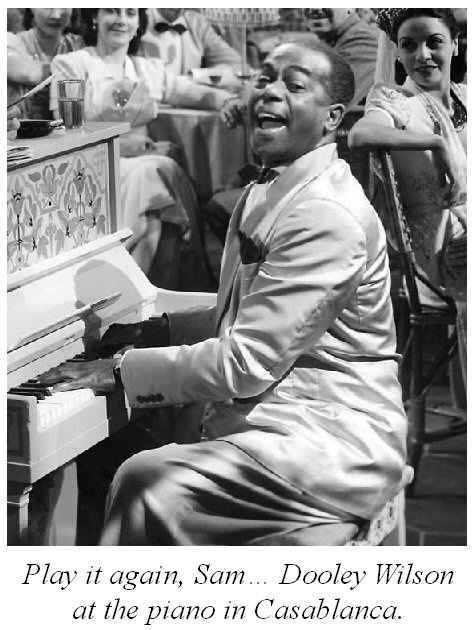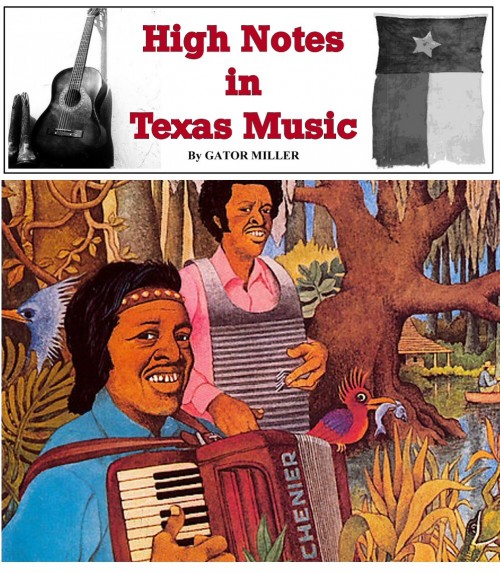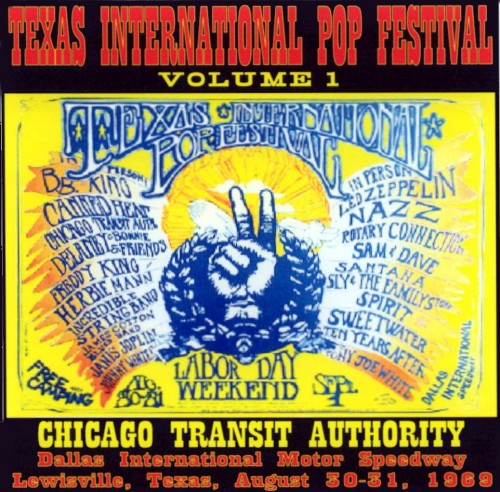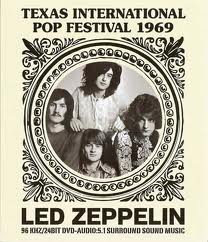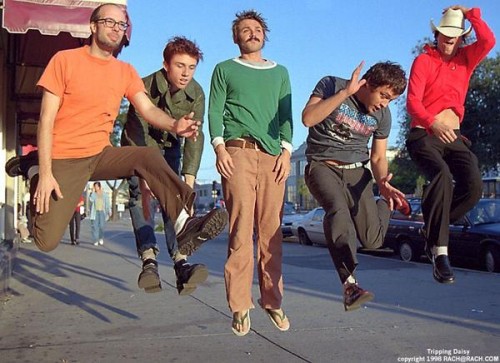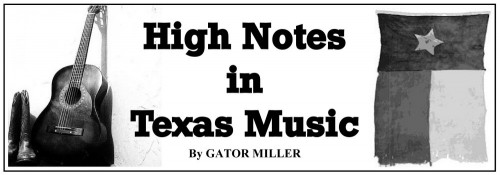About Gatorpress
Stands for truth and justice.-
 GALVESTON AREA
GALVESTON AREA- Galveston already anticipating Icon of the Seas and other massive cruise ships - Chron Sometime next year, said Galveston Wharves port director and CEO Rodger Rees, Galveston will see its first “four-ship day.
- Food inspections: April 26, 2024 | News | pharostribune.com Diddle's Diner. Address: 201 S. California St., Galveston. Routine inspection; April 3, 2024. No violations noted.
- Galveston Wharves board approves $29 million construction contract for cargo area The Galveston Wharves Board of Trustees has approved a $29.9 million construction contract to begin the first phase of an estimated $90 million in ...
- TX Houston/Galveston TX Zone Forecast | Agate | victoriaadvocate.com ZFPHGX. Zone Forecast Product for Southeast Texas. National Weather Service Houston/Galveston TX. 328 AM CDT Fri Apr 26 2024. TXZ211-261600-.
- 'Sticker shock' sweeps Galveston County after appraisals | Local News The Galveston County Central Appraisal District raised property values county-wide by about 8 percent but some owners saw increases of ...
- John Wheeler: Cyclone Bhola in Bangladesh in 1970 was the world's deadliest storm The deadliest storm in United States history is the Galveston hurricane of September of 1900, which killed an estimated 8000 people.
- William J. Cross | Hot Springs Sentinel Record Born on Galveston, Texas, on May 29, 1949. Billy grew up on the island and was always proud to carry the local badge of honor, "Born On Island – BOI." ...
- TX WFO HOUSTON/GALVESTON Warnings, Watches, and Advisories - The Huntsville Item Flood Statement. National Weather Service Houston/Galveston TX. 821 PM CDT Thu Apr 25 2024 ...The Flood Warning continues for the following rivers ...
- Woodlands officials fight plan to widen Research Forest - Houston Chronicle Local officials have asked the Houston-Galveston Area Council to scrap a proposed plan to widen a 2.8-mile stretch of Research Forest Drive from four ...
- Galveston inmate hangs himself in county jail, authorities say | Local News Galveston County Sheriff's Office deputies found the man, whose identity authorities hadn't made public, hanging from a noose in his cell, ...
- Galveston already anticipating Icon of the Seas and other massive cruise ships - Chron
-
Recent Posts
- Lake Jackson Cop Tyrant Loses His Job Over This
- The Bully of the Beach at Galveston & Bolivar Peninsula – Deputy Jack Walker
- Texas Female Cop Beats the Daylights Out Of Pregnant Woman, and Gets Away With It!
- Baytown Texas Cops Arrest Man For Parking Suspiciously, Three Officers Indicted
- I Went to the Texas City Buc-ees for gas – and THIS happened…
- How Pam Matranga destroyed her career as Galveston County Constable
- Why is it ILLEGAL to FEED HUNGRY PEOPLE in Texas???
- Ex Pastor Republican Who Called Others Groomers, Resigns After Getting Caught Grooming
- Police Arrest Deaf, Blind Woman during Breakup – Freeport, TX
- Texas cop threatens to kill driver during traffic stop near Houston
- Texas Cops Arrest Diabetic Man For Eating in Parking Lot
- The Story of Otto the Watchdog
- Confronting Galveston Police Officer
- Victoria by Benny Brasket
- Kemah Safety Concerns
- Bert Wills – Dangerous Man
- Prison Guards Beat Woman Into Quadriplegic State, Get Off Scot Free.
- Republican Congressional Candidate Tries to Throw His Weight Around With Cop
- Child Sex Ring Busted At Church, Pastor Facing Life in Prison
- Pastor Kenneth Copeland Assaults Man In Wheelchair!
- Pastor Molested 16 Year-old Church Member
- YOU Can be Arrested for DUI even if you are 100% Sober
- Tulia, TX: Police Frame Innocent Citizens on False Drug Charges
- Texas DPS is Corrupt From Top to Bottom
- MESSAGE FROM MY UNCLE IN EAST TEXAS:
- WHAT REALLY HAPPENED IN AFGHANISTAN:
- REPORT FROM EARTH #2:
- MEANWHILE, IN DICKINSON:
- Book of Martyrs: George Floyd
- TRAITORS SHOULD BE REMOVED FROM OFFICE.
- Ted Cruz Does Not Care About You.
- A FAREWELL TO TRUMP 11/23/20:
- HANG IN THERE, TRUMP! 11/22/20:
- THANKFUL FOR TRUTH IN AN ERA OF BIG LIES 11/22/20:
- ZOMBIE TRUMP WILL STAY AT THE HELM:
- TRAITORS IN MICHIGAN 11/17/20:
- Mayor comes home late, choked by husband
- COPLAND: Clear Lake Shores
- Gator’s Rant: Trump to meet with Putin
- Illegal Immigrants Returning To Mexico For American Jobs
- Flying Saucer crash at Roswell in 1947
- Trump Asked White House Janitor for “Loyalty” Oath
- Man Stabbed in Cavalier Manor
- A Gringo visits Mexico
- UFOs / Flying Saucers are in the immediate vicinity
- Make me laugh…
- Make me laugh & I will buy you a beer…
- Hands Off My Happy Hour
- Move over, asshole!
- Rockabilly Pioneer Alvis Wayne – Bacliff, Texas
- Karaoke singer signs with Columbia Records
- I can’t feel right until these questions are answered about 9-11….
- Gifts I Didn’t Want
- Make me laugh & I’ll buy you a beer…
- Make me laugh & I’ll buy you a beer…
- Gator’s Rant: Stop Picking On Bullies
- Bad Sam’s Report: Dick Cheney’s bizarre actions on 9-11
- Make me laugh & I’ll buy you a beer…
- FBI Says Missing Teen Is Likely a Hooker By Now…
- Great Moments In Texas Music – Dooley Wilson
- Ken Lay Is Alive & Well…
- Make Me Laugh & I Will Buy You A Beer…
- It Really Happened…
- Clifton Chenier, The King Of The Bayou
- Gator’s Rant: coping with uncooperative sharks
- Great Moments in Texas Music – Lewisville, 1969
- Make Me Laugh & I Will Buy You A Beer…
- Ten Reasons the Official Story of 9-11 Can’t Be Trusted
- Know Your Rights!
- Romneys encourage underpriveleged kids to try polo, yachting, and equestrian sports:
- Bad Sam: Tax The Churches to Balance the Budget
- Coloring Contest: We Have A Winner
- Gator’s Rant: Cash Windfall, Advice to Writers
- Purple Cow
- Paid Seawall Parking Is A Tremendous Success
- Tripping Daisy Rises From Deep Ellum
- The assassination of reporter Michael Hastings:
- Gator’s Rant: Dealing with the Mean Drunk
- A Streetcar Named Deceit…
- Make Me Laugh & I Will Buy You A Beer
- It Really Happened…
- Phil Ochs – The Singing Journalist
- Gator’s Rant: Adopting A Mutt From The Doggie Jail
- The Truth About Waco – An Eyewitness Account
- Ghosts Of The Coast: Local Haunted Places
- Make Me Laugh & I Will Buy You A Beer
- It Really Happened…
- THE FIRST ELECTRIC LEAD GUITARIST – T-BONE WALKER
- Gator’s Rant: It pisses me off when…
- Make Me Laugh & I Will Buy You A Beer…
- HOW TO GET ALL TORE DOWN AND HAVE A REAL BIG TIME…
- Bold Teen Saves His Family From Death in Webster Home Invasion
- Unsolved Beach Death Update:
- Why We Must Hate Hugo Chavez:
- San Leon Prepares For Spring Break
- Police State Mardi Gras in Galveston
- Kangaroo Court Capers Entertain in Galveston County
- Downtown Galveston Merchants Want Changes In Mardi Gras
- Missing Woman Found In Local Bed
- Miniature Capsule Will Carry Deadly Germs Across The Universe
- Medicinal Pothead Wins Case
- Make Me Laugh…
- 50 Years Of Government Drug Dealing
- The Silencing Of Margie Schoedinger:
- Make me laugh and I will buy you a beer…
- Protected Witness Getting Settled In
- Blind Group Sues Over SOB Laws
- County Attorney Files Lawsuit To Require Club to Stop Illegal Activity
- Electric Reliability Council Meeting Postponed Due To Power Outage
- $1,000,000 Cocaine Found Aboard Crude Oil Tanker
- Copper Thieves Busted By Coppers
- Environmentalist Wackos Blockade Keytone Pipeline Offices
- Houston Rodeo Music Lineup: Send in the clowns
- My new career as a poet…
- Make me laugh and I will buy you a beer…
- Marijuana Shortage after Hurricane Sandy has Yankee Pot Dealers Driving South For Supplies
- Dickinson Man Calls 9-1-1 to report Domino’s Won’t Deliver to Him
- Things To See Before You Die…
- Where Did The Conservative Movement Go Wrong?
- What Now For Business Owners?
- It Really Happened
- Gators Rant: Acronympomania
- The Official Story of 9-11:
- Prison For Sandcastle Artist
- The Day the Music Died – A Special Report
- Buying cyanide.
- Double Amputee Gunned Down By HPD Executioner:
- Habitual Offender Faces 25 Years
- Bartalk: Staying the Course
- Gator’s Rant: Jam Session Etiquette
- Ten Years Ago in Gator Press:
- Invasion of the Booby Snatchers
- It Really Happened…
- Make me laugh & I will buy you a beer…
- How Weed Can Save America
- General George S. Patton was Murdered
- A message from the bartender:
- The Guilty Go Unpunished In Mass Civilian Murders
- A married couple was asleep when the phone rang
- It Really Happened
- Fukitol
- Drink like a manly man:
- Apparently…
- Kiss my ass:
- It Really Happened…
- Know thy Bartender…
- One Giant Leap Backwards For Space Exploration
- A soldier was given the job of hunting buffalo
- Did Laura Bush Purposely Kill Her High School Boyfriend?
- The Strange Death of Patrolman J. D. Tippet
- I ain’t had no fun in months
- Full Moon Fever and Mr. Smith:
- Things That Piss Me Off
- Actual News
- An Interview With An American Hero
- It Really Happened
- Imbeciles Are Precluded…
- Make Me Laugh & I Will Buy You A Beer
- Learn The English To Speak
- Funny Bones – Jokes
- A blonde with two red ears
- A group of deer hunters were in camp
- Stray Cats For The Homeless
- A young man meets an attractive girl in a bar.
- Castro’s Buddy in Bacliff
- Stupid Crooks Dept:
- Thanksgiving Reality Check
- Bar Talk
- Corection of Misteak
- Bar Talk
- Lies From MADD
- Bar Talk
- Bad Sam on the Federal Reserve scam
- It Really Happened
- San Leon UFO Crash
- Gator’s Rant
- It Really Happened…
- Brew Ha Ha
- Wall Street Protesters Are Legitimate American Heroes
- BarTalk
-

Travel through time!
-
-

Category Archives: State
The Story of Otto the Watchdog
Royse City, Texas. The police there are ignorant, untrained, cruel, vindictive, and dangerous. Otto is detained and arrested without any probable cause. Police take him into custody and seize his property. Later, they seize his children and arrest him on charges of camping without having running water and electricity, alleging that it is child abuse. This king of abuse is becoming more common in the United States. I wish all of those people who like to stand up for the 2nd Amendment in this state would also stand up for the 1st Amendment, the 4th Amendment, and the 5th Amendment, all of which are under attack by police organizations that operate as armed criminal gangs. Officers like these are precisely why American citizens do not trust the police.
Posted in State
Comments Off on The Story of Otto the Watchdog
Illegal Immigrants Returning To Mexico For American Jobs
 PROTESTERS NEAR THE US-MEXICO BORDER
PROTESTERS NEAR THE US-MEXICO BORDER
As dozens of major American corporations continue to move their manufacturing operations to Mexico, waves of job-seeking Mexican immigrants to the United States have begun making the deadly journey back across the border in search of better-paying Mexican-based American jobs.
“I came to this country seeking the job I sought when I first left this country,” said Anuncio Reyes, 22, an undocumented worker who recrossed the U.S. border into Mexico last month, three years after leaving Mexico for the United States to work as an agricultural day laborer. Reyes now works as a spot-welder on the assembly line of a Maytag large-appliance plant and earns $22 a day, most of which he sends back to his family in the U.S., who in turn send a portion of that back to the original family they left in Mexico.
Like many former Mexican-Americans forced by circumstance to become American-Mexicans, Reyes dreams of one day bringing his relatives to Mexico so that they, too, may secure high-paying American jobs there.
Despite the considerable risk illegal immigrants face in returning across the border, many find the lure of large U.S. factory salaries hard to resist – these positions pay three times what Mexican jobs do.
There is an increasing motivation to return before the Trump administration constructs the proposed border wall. “When the wall is built, we will then be trapped in the United States, and have no way to get back into Mexico,” said Carla Benitez, an undocumented worker in Laredo; “So now the ‘coyotes’ who get paid to smuggle people across the border are making money both ways.”
The danger is very real. When 31-year-old illegal Texas resident Ignacio Jimenez sought employment at an American plant in Mexico, he was shot at by Mexican border guards as he attempted to illegally enter the country of his citizenship, pursued by U.S. immigration officials who thought he might be entering the country illegally, and he was also fired upon again by a citizens volunteer group called the Minutemen.
They eventually fished him out of the river and sent him back to his job washing dishes at TGI Friday’s in McAllen.
Strangely, the trend of illegal re-emigration is causing great resentment among the local Mexican population, and tension between Mexicans and illegally re-entered Mexicans – called “repatriados” – continues to build.
“I hate these Mexicans, always coming back here to Mexico from America and taking American jobs from the Mexicans who stayed in Mexico,” said 55-year-old former Goodyear factory manager Miguel Diaz, who says he lost his management job to a better-trained repatriado last March.
“Why don’t they go back to where they went to and leave our jobs alone?”
Great Moments In Texas Music – Dooley Wilson
“Play it again, Sam” – Dooley Wilson on Piano
When you talk to movie buffs about their favorite all-time films, the one everyone places near the top is Casablanca, the 1942 love story starring Humphrey Bogart and Ingrid Bergman. But few know that a East Texan by name of Dooley Wilson played a significant role in the film – not necessarily as a part of the plot, but as the piano player who sang “As Time Goes By,” the classic which ranks among film’s top movie songs. An African-American, Wilson was born as Arthur Wilson on April 3, 1886, in Tyler. He started off singing in minstrel shows at age 12. He reportedly played in black clubs around Tyler before moving to Chicago, where he earned his nickname in 1908, as a result of his signature Irish folk song, “Mr. Dooley” while playing at the Pekin Theater. He performed the role in whiteface.
Because of his role in Casablanca, history has forever associated Dooley Wilson with the piano. But Dooley never played one. He only sang and played the drums. In fact, although he is best known today for his singing and acting, during the 1920s Dooley Wilson was regarded as possibly the most talented drummer in the world.
In 1919 Dooley formed a band and went to Harlem, where they were a big sensation. A tour of Europe soon resulted, with long engagements in Paris, London, and Berlin. For ten years the band traveled across the Atlantic to tour Europe, starting and ending each tour aboard luxury cruise ships, where they earned their passage by performing.
Back in New York, Dooley’s rich voice and charismatic charm kept him busy on and off Broadway for the next two decades. During the depression, when times were hard, Dooley – in his 40s – managed to send his parents in Tyler $2 or more every week to help them get by – back when $1 was a day‘s pay in the cotton fields.
He performed with Orson Welles and John Houseman in Federal Theater productions and performed on Broadway into the early forties, when his breakthrough appearance came in the role of Little Joe, a stereotypical lazy rascal in the hit musical, “Cabin in the Sky.” He also played an escaped slave in “Bloomer Girl” and his performance of the song, “The Eagle and Me” was included in the Smithsonian’s compilation of greatest American theater songs.
While Casablanca established Dooley’s reputation on the silver screen, it wasn’t his first film. He had already played in more than twenty pictures when the Casablanca film came along. For his role, he was paid $350 a week.
If you remember the film, Sam was a singer and pianist employed by Rick (Humphrey Bogart) to entertain guests at his cabaret and drinking establishment.
“As Time Goes By,” written by Herman Hupfield, appears as a continuing musical and emotional theme throughout the film.
In the film, Wilson as Sam performs several other songs for the café audience: “It Had To Be You”, “Shine”, “Knock On Wood”, and “Parlez-moi d’amour”. Dooley’s rendition of the “As Time Goes By” is remembered as much for its quality as it is for its cinematic associations.
A few years ago, a television show ranked the movies’ top songs – and “As Time Goes By” was among the top three, along with “Somewhere Over the Rainbow” and “Singing in the Rain.”
Since Dooley didn’t play the piano, his playing in the film was actually done by Elliott Carpenter, who was placed on the set where Wilson could see him and imitate his hand movements. The only black people on the Casablanca set, Wilson and Carpenter remained lifelong friends.
Dooley almost didn’t get the Casablanca role. Ella Fitzgerald, a popular singer in the forties, was considered for the part and Dooley’s Sam might have been Ella’s Molly.
Ironically, Humphrey Bogart’s role as saloon owner Rick was originally supposed to be a young Ronald Reagan. George Raft, another popular actor in the forties, was a second choice. When both turned the role down, Bogart was selected.
Dooley Wilson died in 1953 in Los Angeles at age 67. (GATOR)
Clifton Chenier, The King Of The Bayou
GREAT MOMENTS IN TEXAS MUSIC: Clifton Chenier Invents Zydeco
“Louisiana ‘Bayou Land’ has produced some of the greatest talents…..Fats Domino, Pete Fountain, Louis Armstrong to name but a few. But out of this comes a man and his accordion. The blues, the lonely boy, Clifton Chenier. The only black man that can play a lily-white dance on Wednesday and a solid black dance on Thursday and pack them in each night.
Then from Frisco Bay to the European Folk Festival…. satisfying the young and rearranging memories for the old. Clifton is his own. When you hear his records anywhere you know it’s him….people don’t have to tell you. A very gifted man!”
So read the liner notes to Clifton Chenier’s ‘Bayou Soul’ LP, originally released on Crazy Cajun Records. It is a typical piece of folksy whimsy by label owner Huey P. Meaux – the “Crazy Cajun”. Notice there is no mention of zydeco music, but there is reference to Clifton’s multi-racial appeal, the blues influence, the dance aspect, and most precious of all, his very identifiable sound.
When most people think of Zydeco, they assume it is a kind of music which was created in Louisiana. With all due respect to our gumbo and crawfish eating neighbors, the fact is that Zydeco was invented in Texas, although the group of musicians who made it become popular were almost exclusively Cajuns, “Coonasses” and Creoles from “across the river“. Among these, the King of Zydeco, Mr. Clifton Chenier, is preeminent. Chenier was from Louisiana, but Zydeco was invented and popularized in hundreds of honky-tonk bars between Houston and Lake Charles in lower east Texas during the 1960s & 70s.
When Clifton Chenier and his band played at Johnny Land’s Club in Port Arthur in the 1950s, little old ladies and young girls would get up and dance ecstatically. Toes would be tapping at every table. Zydeco music was invented by accordion player Clifton Chenier after he first came to Texas just looking for a job to support his family.
In those days, when Creoles and Cajuns migrated from Southwest Louisiana they tended to go where the work was – and that wasn’t New Orleans. They went west to places in Texas like Port Arthur, Beaumont, Galveston, and Houston. In those days, the paying jobs were found in the refineries, and that’s where they landed. A few got lucky and found work around Lake Charles, but most of the jobs were in Texas. That’s why you don’t see very many Zydeco bands working in New Orleans – in fact, they’re only found in the tourist traps there. Zydeco music, with all of its’ Cajun roots, is primarily a southeast Texas phenomenon.
Born in Opelousas in 1925, Clifton was the son of a sharecropper and amateur accordion player, Joe Chenier, and the nephew of a guitarist, fiddler and dance club owner, Maurice “Big” Chenier. He literally learned to play the accordion on his father’s knee.
Young Clifton found his earliest influences in the blues of Muddy Waters, Peetie Wheatstraw and Lightnin’ Hopkins, the New Orleans R&B of Fats Domino and Professor Longhair, the 1920s and ’30s recordings by accordionist Amede Ardoin, and the playing of his own childhood friends, Claude Faulk and Jesse and Zozo Reynolds.
Acquiring his first accordion from a neighbor, “Easy” Blasa in 1937, Chenier was taught the basics of the instrument by his father.
By 1944, Chenier was performing in the dance halls of New Ibreia, while picking sugar cane by day to feed his family.
In 1946, he followed his brother Cleveland to Lake Charles. He absorbed a wealth of tunes from musicians such as Zozo Reynolds, Izeb Laza, and Sidney Babineaux, who, despite their talents, were never recorded.
The following year, Chenier traveled to Port Arthur with his wife Margaret, where he worked for the Gulf and Texaco refineries until 1954. Still playing music on weekends,
Chenier was “discovered” there by radio disc jockey J.R. Fulbright, who recorded him at radio station KAOK in Lake Charles, and issued a few records of those live sessions.
Chenier’s first national attention came from the first KAOK single, “Ay Tete Fille (Hey, Little Girl)”, a cover of a Professor Longhair tune, released in May of 1955.
The song was one of 12 that he recorded during two sessions produced by Bumps Blackwell, best known for his work with Little Richard.
By 1956, Chenier had quit his day job to devote full-time to music, touring with his band, the Zydeco Ramblers, which included blues guitarist Philip Walker. The following year, Chenier signed with the Chess label in Chicago.
In 1958, Chenier moved to Houston, and from here played packed shows all over the south. Although he toured with Etta James throughout the United States, Chenier’s career suffered when the popularity of ethnic and regional music styles began to decline.
He recorded thirteen songs between 1958 and 1960, but none of them charted.
During the 60s, Chenier played a major concert in San Francisco and recorded for a number of notable labels, including Argo and Arhoolie Records, in a bid to reach a wider audience. “Squeeze Box Boogie” became a hit in Jamaica in the 50s, but generally his style of music was not widely heard before the 60s.
The turning point in Chenier’s career came when Lightnin’ Hopkins’ wife, who was a cousin, introduced Chris Strachwitz, owner of the roots-music label Arhoolie, to his early recordings. Strachwitz quickly signed Chenier to Arhoolie, producing his first hit single in four years, “Ay Yi Yi”/”Why Did You Go Last Night”.
In 1976, Chenier recorded one of his best albums, Bogalusa Boogie, and formed the Red Hot Louisiana Band, featuring tenor saxophonist “Blind” John Hart and guitarist Paul Senegal.
Chenier reached the peak of his popularity in the 1980s. In 1983, he received a Grammy for his album “I’m Here!” recorded in eight hours in Bogalusa, Louisiana.
The following year, he performed for President Reagan at the White House.
Chenier crafted the definitive zydeco sound that still sets the standard. He did so by creating an artful blending of Creole folk with rhythm & blues.
Chenier adapted this material to the accordion and sang the lyrics in Creole French.
Beyond these innovations, Chenier’s skill as an accordionist has yet to be surpassed.
In later life, in addition to suffering from diabetes, he had part of his right foot removed due to a kidney infection in 1979. Although this prevented him from touring as frequently, Chenier continued to perform until one week before his death on December 12, 1987. Following his death, his son, C.J. Chenier, took over leadership of the Red Hot Louisiana Band.
Three generations of Chenier musicians have now made their mark in Texas. (GATOR)
Great Moments in Texas Music – Lewisville, 1969
August 30, 1969 – The Lewisville Pop Festival
Two weeks after Woodstock, Lewisville Texas hosted the Texas International Pop Festival (also called the Lewisville Pop Festival or the Dallas Pop Festival) on the grounds next to the new Dallas Motor Speedway. That was 44 Years ago, if you’re keeping score.
There was a nice lake up there, and it was a hot Labor Day weekend, so it was just natural for the early campers to practice the traditional Texas custom of skinny-dipping.
Word got back to the God-fearing Bible bangers in town, and they got all riled up about the naked hippies doing God Only Knows up at the lake. They called the Mayor, who was out of town in Colorado, and demanded that he take immediate action. Then they grabbed binoculars and hopped in their trucks to get a closer look at the flower children cavorting.
A few of the locals put their bass boats in the water. Ostensibly they were there to catch fish, but mainly they were out there to look at all the hippie chicks running around naked. Some of them were creepy enough to make lewd remarks and even make threats.
Rednecks turned out in pickup trucks, cruising around looking to grab a hippie and chop off his hair. Back then, they actually called it “taking scalps” and it was a real redneck hobby.
A delegation from the town went to the Lewisville Chief of Police, Ralph Adams, and asked him to get out there and bust a few heads and run off the hippies.
Bear in mind, this was the older folks talking. The young folks thought the music festival was wonderful. That was the problem, as the worried parents feared their kids might begin to grow long hair and espouse peace, move to California, take LSD, and then jump out of a window.
But the organizers of the event had covered their asses. They had hired Lewsiville Police Chief Ralph Adams to be their Chief of Security for the event. His resignation was pending with the city, and he was using his earned vacation time to work the event.
In any case, the hippies who attended weren’t there to fight. There was no serious trouble with the huge crowds who attended, although several local troublemakers were arrested.
The festival was extensively advertised through radio and newspapers and was promoted at Woodstock. Consequently, music enthusiasts from all over the United States, and even from foreign countries, poured into Lewisville to pay the admission fee of $6 a day.
Although the promoters anticipated a crowd of over 200,000, actual attendance for the three days was more like 120,000. The festival lost money, but was generally considered a success by those who attended. The promoters created a “carnival-like” atmosphere that featured booths catering to “flower-children.” Astrologers, painters, artists, craftsmen, leather workers, sellers of incense, T-shirts, jewelry, and candles; and food vendors all peddled their wares.
The opening act was a little-known band called Grand Funk Railroad out of Flint, Michigan. The band had just completed their first album, called “On Time”.
Janis Joplin took the stage in Texas for the first time since she became a star. The last Texas stage she had played on was at a little dive bar in Seabrook on open mike night. This time, she was overwhelmed by the welcome she received.
Sweetwater, who had been the first full band at Woodstock with their strange and wonderful sound, played what would sadly be one of their last gigs before lead singer Nancy Nevins would have her voice stolen in a wreck with a drunk driver.
B.B. King, who played all three nights, jammed with the amazing Johnny Winter at the free stage, close by the campgrounds. Wild Texas blues filled the nights by the lake.
And the music went on until Monday night, when Sly and the Family Stone closed the event appropriately enough with “Hot Fun in the Summertime.”
The lineup was even better than Woodstock had been two weeks earlier. Sam and Dave, Santana, Canned Heat, the Grass Roots, Chicago Transit Authority, Tony Joe White, Spirit, Ten Years After, Freddie King, and an unknown British rock band called Led Zeppelin also performed during the three-day festival.
Wavy Gravy and the Hog Farm served free food and counseled with anyone who might have forgotten that their acid-induced scene was only a movie. Ken Babbs, of Ken Kesey’s Merry Pranksters, ran the free stage. Security was handled by the “Please Force.” Every member of the audience was deputized.
Local musician Richard Rhea (Richard The Drifter) was there, fresh out of the Air Force, and says it was one of the greatest experiences of his life. “After being on active military duty, this was a complete 180 degree turn for me. It sent me spinning in a whole different direction.” he said, “It was an actual life-changing experience for me and I‘m sure for others.”
Tripping Daisy Rises From Deep Ellum
Deep Ellum is a legendary Dallas neighborhood where great music has sprouted like stray grass growing between chunks of asphalt on a lost highway.
Early in the last century, music legends like Leadbelly, Lightning Hopkins, Bessie Smith, Robert Johnson and others played in the gin joints and speakeasies of Deep Ellum. Poor white trash and working-class blacks eked out an existence that seemed to slide downhill as the Great Depression arrived. Among the denizens of the decaying district were the outlaw duo of Bonnie and Clyde, and machine gun toting bank robber Pretty Boy Floyd, who laid low in rented rooms and caroused the night clubs there while the Texas Rangers and G Men sought them elsewhere.
After several decades of impoverishment, a few intrepid souls started to revive Deep Ellum, starting in the 1970s. Hippies, co-ops, small music venues and art galleries opened and closed like one-day flowers. The music scene started to make a comeback.
Around the time that grunge music started to make waves in Seattle, the Deep Ellum scene was resonating to a new beat churned out by local bands like the Toadies, Butthole Surfers, and Tripping Daisy. If the folks who run the city of Dallas had appreciated what was going on in their backyard, the Texas sound might have carried the day. Instead, they continued to oppress and arrest the mushroom trippers and potheads who gravitated to the groovy scene, and Seattle became the “Next Big Thing” while the Dallas music scene became more of an underground subculture which went largely unappreciated by the unwashed masses.
Tripping Daisy formed around 1990. The original lineup was composed of lead singer/guitarist Tim Delaughter along with Jeff Bouck (drums), Wes Berggren (guitar) and Mark Pirro (bass). Delaughter (rhymes with daughter) became the band’s prime mover, although the profound influence of Wes Berggren deserves attention.
The son of legendary Texas club musician Don Beggren of the Sweetgrass Band, Wes was brought up hippie-style in the East Texas village of Malakoff. His parents raised two sons, Wes and his brother Andy, who later became a doctor.
During their childhood, the boys were never given a bunch of rules to obey. They were allowed to do whatever they chose, and both became excellent scholars and accomplished at whatever they set their hands to. Described as a musical prodigy, Wes was a drum major and class valedictorian at Malakoff High School, and received a college scholarship based on his academic prowess.
Wes was a cerebral influence on the other members of Tripping Daisy, and was regarded as the group’s stalwart for his intuitive talent and innovative ideas. Delaughter seems to have been profoundly influenced by his friend and mentor, and experienced a tremendous expansion of his own creative ability during the entire time the two worked together.
Tim doesn’t speak often of his early years as a musician. Influenced heavily by the music of the 70s, and perhaps by his own adventures with acid and other psychedelic substances, he brought a visual element to the band’s shows that soon earned them a fanatical following in the clubs around Dallas.
At their early shows, the band used a 1960s Bell and Howell projector to superimpose a psychedelic slideshow on the stage and the band. This bit of old-school wizardry, combined with the powerful range of original rock tunes the band composed, set them apart from the hair bands and imitative cover bands that dominated the local club scene. During their first year, Tripping Daisy became one of the hottest bands in Dallas, and after only two years, they were hearing their music on KDGE in Dallas.
Later that year, Tripping Daisy released their first album, “Bill” on the Dallas-based Dragon label. The album was a big hit in Dallas, and led to a bidding war among several major record labels who wanted to sign the group. Island Records signed Tripping Daisy in early 1993 and the group started working on their first national release, the hit album which became “I Am An Elastic Firecracker.”
The band quickly became a major attraction on the college rock circuit, boosted by appearances on MTV. Packed houses ensued in hot music towns like Tampa, Athens, LA, Seattle, and Houston. The bands’ most popular release was “I Got A Girl” which continues to be one of the most popular music videos ever released on MTV.
The arrangements were taken to a more advanced level on this album, but fade in comparison to the improvements on their next release, “Jesus Hits Like the Atom Bomb.” Delaughter really found his niche as a vocalist and songwriter on this album. Though minimalist in some respects, the album is characterized by an interesting fragmentary songwriting style, where a song can go from one idea to a completely different other, and still achieve a seamless quality. Laced with powerful melodies in tracks like “Field Day Jitters” “Your Socks Have No Name” and “About the Movies”, the album was outstanding – but the label was having troubles of its’ own, and failed to properly support the release. Soon after, Island Records, embroiled in their own internal turmoil, allowed their contract to expire.
The group’s future was forever doomed when guitarist Berggren was tragically found dead due to an overdose in October of 1998. Shortly after Berggren’s death Tripping Daisy released a self-titled album in early 1999 on Delaughter’s own label, Good Records. That final album featured Berggren’s father Don playing a Fender Rhodes on the unfinished “Soothing Jubilee.”
The final album was warm and symphonic with beautiful instrumentation and playful lyrics, including a new version of “One Through Four,” a song featured on “Bill.” The re-recorded edition showed the astonishing progress the band had made in 6 years.
Delaughter spent the next couple of years getting married and starting a family. However, he and the remaining members of Tripping Daisy soon found the lure of a return irresistible.
The result was the Dallas symphonic pop group The Polyphonic Spree, a group consisting of over 20 musicians which continues to tour and record.
GATOR
Phil Ochs – The Singing Journalist
West Texas was a place of suffering during the Great Depression. A Jewish doctor of Polish descent arrived there with his wife in 1938, after being sent from New Jersey by his employer, the United States Army. Jacob and Gertrude Ochs settled in El Paso, where their son Phil was born into a world about to go to war in December of 1940.
Phil would become a tremendous influence, a tragic figure, and later, a forgotten man,
Raised in the 1940s and 1950s, he was an admirer of John Wayne and World War II hero-turned-actor Audie Murphy (as well as James Dean), and as a boy seemed to accept a lot of the notions that Wayne and Murphy stood for. At 16, Ochs chose to attend Staunton Military Academy in Virginia. He lived the life of a cadet successfully for two years before entering Ohio State University in 1958. Music had already begun to attract him, and he’d developed an interest in country music, which later helped provide his introduction to folk music. It was while at Ohio State that he was introduced to the songs of Woody Guthrie, Lee Hays, and Pete Seeger, and the protest tradition they represented. He bought a guitar for $6 and taught himself to play it in his spare time.
By the end of the 1950s, Phil was leading protests on campus against mandatory ROTC training. Ochs moved from Ohio to New York in the early ’60s and was soon a prolific writer of the protest songs then in vogue. His initial recording efforts were heard on compilations for Broadside, Folkways, and Vanguard (which recorded him at the Newport Folk Festival).
A songwriter and singer who was cast in the Woody Guthrie and Pete Seegar mold, Phil spent his career in the shadow of Bob Dylan. Unlike Dylan, who remained aloof regarding the social issues of the time, Phil was a true believer, dedicated to making the world a better place through the power of music. He believed in the causes he sang about, and this may have been his downfall. Phil considered himself to be a journalist whose medium was that of song. He used his gift to tell stories that were relevant and important.
In contrast to Dylan, who was an enigmatic media star after 1964 – Ochs assumed the role of outlaw, writing and performing songs that told the unvarnished truth. His sincere voice made every word count, and he made his meaning quite clear.
In “Here’s To The State Of Mississippi” he tackles racism and violence:
And here’s to the cops of Mississippi
They’re chewing their tobacco as they lock the prison door
Their bellies bounce inside them when they knock you to the floor
No they don’t like taking prisoners in their private little war
Behind their broken badges there are murderers and more.”
In “The Cannons Of Christianity” Phil took on religious hypocrisy.
His anti-war songs were the best ever written, including “I Ain’t Marching Anymore”, “Chaplain Of The War”, and many others.
His songs about the justice system showed a deep insight into the social problems lurking there, including ideas that only became a subject for serious discussion many years later, like false confessions, the subject of “The Confession” – the first verse of which says:
There’s nothing as cold as the freeze in your soul at the moment when you are arrested.
There’s nothing as real as the iron and steel on the handcuffs when you protested.
You race through the night in a prison of fright as you head for a quicksand of questions.
And children unborn will see you in scorn if ever you make a confession.
Ochs moved many to a fresh round of tears about President Kennedy with “Crucifixion.”
Because his lyrics were controversial, and contained open references to such taboos as smoking marijuana, his recordings were relegated to “undergound” radio stations and counterculture record shops. But for all of his outlaw reputation – which began coalescing around him as early as 1965 in some establishment circles – his work ended up infiltrating high school classrooms through the songs “The Highwayman” and “The Bells” the latter an extraordinarily early intersection between folk song and art song. Eventually he too would follow Dylan into electric music and more personal and romantic compositions.
But Ochs had something extra, even in those years: Street credibility among the people who cared – where Dylan, due to his own various personal situations, spent much of the late ’60s as an enigmatic recluse, respected for his songs but rather unknowable and remote.
Ochs was in Chicago for the 1968 Democratic National Convention, when thousands of young citizens (supported by a few brave politicians) took to the streets to scream “Enough!” about the Vietnam War, and were brutally suppressed by the police under orders from the city’s mayor. He even ended up as a witness at the subsequent conspiracy trial of the seven alleged conspirators behind the demonstration. And no matter how far his style advanced, and how complex his songwriting became, he never abandoned his involvement with the issues he believed in.
Apart from American involvement in the Vietnam War, which dragged on into the mid-’70s, he saw many of the causes that he cared about move toward some measure of fulfillment as the 1970s dawned; but personal problems, including clinical depression and alcoholism, left him drained, psychologically and musically.
By the middle of the decade he found there was nothing left inside, and he finally died by his own hand in 1976. It was only after his tragic tailspin and eventual death that he was properly appreciated as one of the most sincere and humane songwriters of his day, whether detailing political atrocities or more poetic concerns. As the decades have passed, he has been largely forgotten, but in his era, Phil Ochs was one of the most influential of American songwriters.
THE FIRST ELECTRIC LEAD GUITARIST – T-BONE WALKER
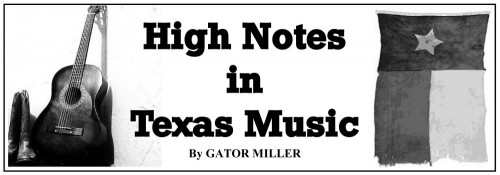
His real name was Aaron Thibodeaux Walker. The nickname “T-Bone” is a bastardization of his middle name. He was born in Linden, Texas in 1910, and died in 1975. Walker was the first guitar player ever to play behind his head while doing splits, play with his teeth, etc.

His shows were often populated with musicians wanting to learn his methods. He was a “guitar player’s guitar player” and a great entertainer as well. He played gigs at now-defunct clubs all over Texas, including Galveston during the high-stakes gambling era.
Suffice it to say that Walker is the inventor of modern electric lead guitar. He was the first to amplify smoking guitar lead solos for public consumption, as early as 1940, and thus initiated a revolution so total that it has become universal.
BB King called him his primary influence. Gatemouth Brown, Pee Wee Crayton, Goree Carter, Pete Mayes, and other Texas guitars followed in his wake during the 40’s and 50’s. The lead guitar work invented and performed by early Texas guitarists became the basis for what we now call classic rock. Easily the earliest and most innovative of them all was T Bone Walker. He could sing, dance (he was paid to dance professionally in Hollywood in the 1930s), and play. He composed music regularly on various instruments.
It seemed to come natural, they say. His stepfather, Marco Washington, played bass fiddle with the Dallas String Band, and T-Bone followed his stepdad’s example by learning every stringed instrument he could lay his talented hands on. One notable visitor to the band’s jam sessions was the legendary Blind Lemon Jefferson. During the early ’20s, Walker led the sightless guitarist from bar to bar as the older man played for tips. Jefferson would “work it” with the guitar for drinks, while T-Bone “worked it” with the ladies.
Walker was exposed to some truly outstanding guitar talent during his formative years: In addition to Jefferson, jazz great Charlie Christian was one of his regular playing partners.
In 1929, T-Bone recorded his first record, a 78 rpm for Columbia, “Wichita Falls Blues”, backed by “Trinity River Blues,”
The sessions were recorded in Dallas, and Walker was billed as Oak Cliff T-Bone. Pianist Douglas Fernell was his musical partner for the disc. Unfortunately, it didn’t sell many copies.
T-Bone headed to Los Angeles during the mid-’30s, where he bummed around with various groups. Around 1939, he concocted an electric guitar and amp setup, an unheard-of device. It was built out of old radio parts, and produced an eerie sound that no one had yet heard. T-Bone played clubs with his daring new toy after assembling his own small 5 piece combo. His show featured acrobatic stage moves, playing behind his back, and other crowd-pleasers.
The show was a sensation, and booking agents in southern California couldn’t get enough of the talented Texan and his brand new style. He was widely copied by competitors.
Capitol Records was a small label in 1942, when Walker signed on and cut “Mean Old World” and “I Got a Break Baby” with boogie master Freddie Slack hammering the 88s. This was the first sign of the T-Bone Walker that electric guitar aficionados know, his fluid, elegant riffs and mellow, burnished vocals set a standard that all generations of electric guitar soloists would measure themselves by.
Chicago’s Rhumboogie Club served as Walker’s home away from home for a few years. He even cut a few sides for the joint’s house label in 1945 under the direction of pianist Marl Young. Walker signed with L.A.-based Black & White Records in 1946 and proceeded to amass a stunning legacy. The immortal “Call It Stormy Monday (But Tuesday Is Just as Bad)” was the product of a 1947 Black & White date with Teddy Buckner on trumpet and invaluable pianist Lloyd Glenn in the backing quintet. Many of T-Bone’s finest recordings were smoky after-hours blues, though an occasional up-tempo entry – “T-Bone Jumps Again,” a storming instrumental from the same date, for example, prove that he wasn’t just first – he was also one of the fastest guitarists, and would be considered so even by today’s standards.
Walker recorded prolifically, with classics like the often-covered “T-Bone Shuffle”, “West Side Baby”, “Glamour Girl”, “Strollin’ with Bones”, “The Hustle Is On,” “Cold Cold Feeling,” “Blue Mood,” “Vida Lee” (named for his wife), “Party Girl,” and, from a 1952 New Orleans jaunt, “Railroad Station Blues”. For a dozen years he produced hit after hit. Then, suddenly, the hits stopped coming. The Elvis/Beatles era seemed to derail his career.
With his stage antics and persona, T-Bone never had trouble getting gigs. People who attended his shows always left talking about how great he was. He liked to chase women, but couldn’t do so at home under his wife’s watchful eye, so he gladly toured a lot from 1960-74, playing a lot of $500 club dates (I hasten to add, that was good money in those days.)
Good Feelin’, a 1970 release on Polydor, won a Grammy for the guitarist, though it doesn’t rank with his best efforts. A five-song appearance on a 1973 set for Reprise, Very Rare, was also a disappointment. Persistent ulcers and a 1974 stroke slowed Walker’s career to a crawl, and he passed away in 1975.
No amount of writing can convey the importance of what T-Bone Walker gave to blues and rock guitar players. He was the first true lead guitarist, and he was also undeniably one of the very best. He was the first lead guitarist to put on a show that left crowds awed and amazed.

